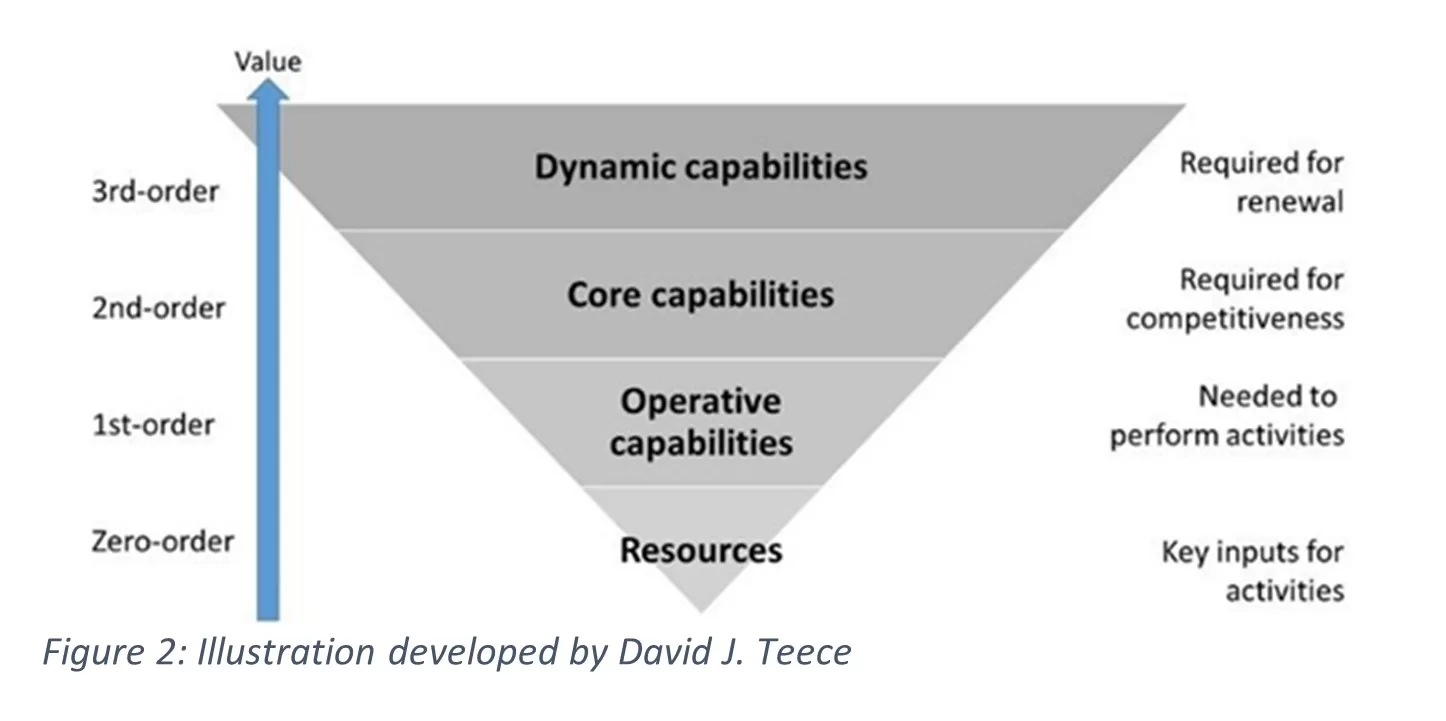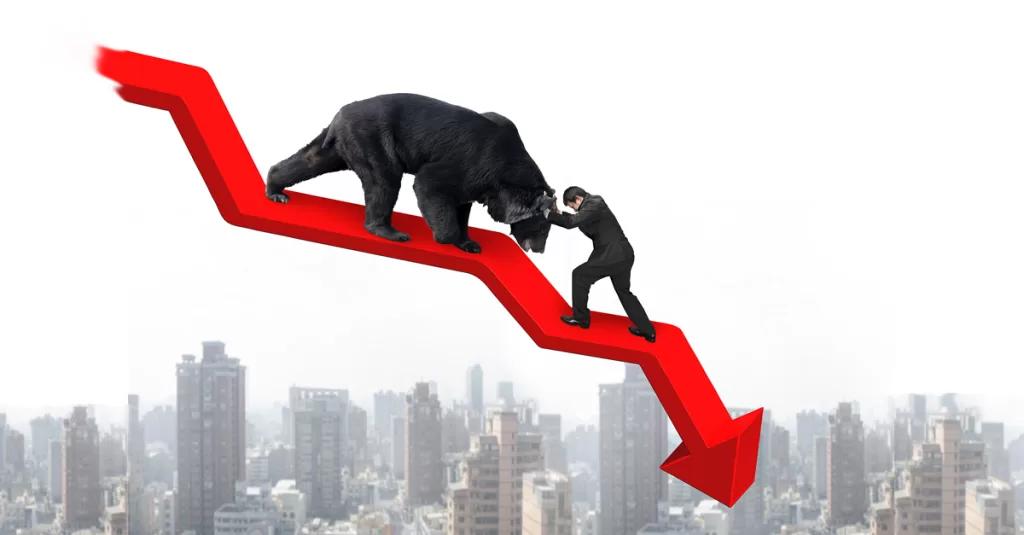Confronting The Bear Threatening Your Strategy
Competition and economic decline threaten success. Whether you face a fierce competitor or lasting supply chain disruptions, things will come your way that will challenge even your best intentions. While we cannot prevent unwanted events, we have discovered a way to keep them from grounding a business. I am not talking about hording cash or being a loan application expert. It’s strategy by design.
Is Cash Always King?
Experts will tell you that to survive a downturn in the economy, you will need cash. While it is important, there is more to keeping a business afloat than having enough funds to wait it out. Most businesses do not keep 6 to 12 months of cash around just in case something happens. So, for companies to stay open, money must come from borrowing or sales. Borrowing may be a workable solution for the near term, but sources will dry up with the inability to repay.
During the pandemic, the Federal government helped by giving access to money, but it was not enough. Given there were not adequate dollars to pay everyone, the rent, and other business expenses, the money only went so far. Customer demand was artificially and drastically inhibited by the lockdown, so earning the cash to stay open became impossible for countless.
An Alternative
It is exceedingly rare for a business to jump into another industry. So, leaders must be creative with their capabilities to modify the way they create and deliver services or products. One strategic choice is to compete within adjacent spaces. For example, consumer goods companies switched soap and lotion production lines to make hand sanitizers. Beer brewers supplied bottled or canned water, while car manufacturers made respirators, and textile ability was used to make face masks.
Hospitality and food service was one of the hardest hit industries. Over 5 million employees lost their jobs within a month. The majority came from full-service restaurants (see Figure 1 below). It is estimated that over 100,000 restaurants have permanently closed [1]. More than a year after the start of the lockdown in March of 2020, employment in the restaurant industry was still 36% below pre-pandemic levels.

Full-service restaurants took the brunt of the layoffs because inside dining was prohibited with lingering mandates limiting occupancy months following. Despite this roadblock, some restaurants survived. Chain restaurants have deeper pockets, but it was not about having cash. Let us look at what happened to the restaurant industry through a capabilities lens, this view offers a better understanding of why some survived despite the odds.
The table below lists three categories of restaurants with some of their core capabilities. Given the restrictions of the pandemic, full-service restaurants were the most vulnerable to closing because they did not at first have the capabilities to sell through delivery or take-out.

What I discovered through my research was those restaurants that already had the ability to package food for delivery and especially those who ran delivery services had the greatest chances of staying open. They relied on their operative capabilities. This does not mean that full-service restaurants were necessarily doomed.
What about Technology?
As with most things, it must be part of the solution. For restaurants any technology that could help had to already be proven. For example, if using outside services like Grubhub and DoorDash or delivery were already part of their business model, then restaurants could more easily stay open. But one of the reasons outsourced delivery services were not more popular was because they added expense to already low margins. This is an industry that was struggling to get cash and could not afford to add more costs. For technology to help restaurants, it would have to offset existing costs or drive revenue growth.
Capabilities Not Productized Solutions
Technologies or capabilities pre-bundled not only are of little use, but they can be a distraction. So, what could full-service restaurants do? Adapting to change is hard and takes time. The answer lies in developing the wherewithal to marshal needed capabilities before customer demand changes. David Teece named these combinations of competency and capacity, dynamic capabilities (See figure 2 below for the distinct types of capabilities).
A company’s unique way of delivering value is people developing competencies together with technology, over time. They are the knowledge, skills, and abilities to perform simple activities to the most complex. Observing people who rely on being ‘book smart’ has shown that competencies are not enough to get things done. People need the right capacities in order to make competencies useful. These include intellect, self-efficacy, and wherewithal in the workplace. I think of it as ‘book smarts’ meets ‘street smarts.’
the firm’s ability to integrate, build, and reconfigure internal and external competencies to address rapidly changing environments.” – Teece, Pisano & Shuen (1997)
Capacity is not often in abundance, so sacrifices need to be made. Companies frequently need to give something up to be able to do something new or different. It is also important to note that having too much of a resource can be misleading and wasteful because humans tend to fill up whatever time and space is available. Still, there is one other factor needed to create value, resources.

Resources are information, materials, outside help, or institutions that are inputs to a company’s processes. To improve competitiveness, VRIN (valuable, rare, imperfectly imitable, or non-substitutable) resources ensure rivals will have difficulty in taking business away. If a firm is using the same resources that others can easily obtain then there is one less competitive advantage.
What do dynamic capabilities look like in action?
Joe Ray of Wired.com provides us a fitting example with a story about a full-service restaurant that was doing well even though 5 million people were being laid off [2]. How did Chef Rivera of Addo manage to keep his full-service restaurant open? In his words: “Focus less on what you’re used to doing and more on what people need. Think of the things that would be nice if you are sitting on the couch or need a little pick-me-up. Don’t get too wordy or descriptive.” The following are highlights from Ray’s article:
- Used staff to deliver instead of outside delivery services.
- Two-person delivery system so one person can be a runner providing customer service and gather feedback.
- Provided ‘Take and Bake’ options to give customers the ability to have a hot meal at their convenience.
- Multiple price points but dropping higher end offerings (Rivera still had $45 pasta w/ wine for two and $105 Hawaiian feast for two)
- Wine pairings to keep full-service conveniences.
- He also offered $9 pay-it-forward bowls to be delivered weekly to the homeless shelter – was up to 1000 donated bowls by 3/17/2020.
- Used social media to highlight upcoming dishes and descriptive videos of what the take-out/delivery meals look like.
- A payment system where customers order everything ahead of time.
What makes these capabilities dynamic is Chef Rivera was already sensing what his customer wanted before 2020. He used dynamic capabilities. When the pandemic hit, he sensed the difference in customer needs and changed his core capabilities to match, as the lockdown and layoffs were occurring, not weeks or months later. This means you should start now instead of waiting for a shock to happen.
Your organization can fulfill its purpose, even with major challenges.
The same goes for strategy by design. I had a client who said that a strategy could not be formulated for his business because the environment was too unpredictable. He was thinking in terms of his organization’s current capabilities. The fact that many businesses thrive in very dynamic environments should tell everyone that its possible, for anyone.
Understanding where you are coming from helps decide where your organization can go. As time goes on, more information becomes available and if done correctly, the organization will have different, if not better, capabilities.
Going for the ‘easy button’, will only slow you down if not make you vulnerable to your competition. If you have adopted a productized solution like lean, take the time to deconstruct the principles adapted by your culture. Rally your teams around your brand, offering(s), or your current purpose. Make how you create and deliver value YOUR way. I promise you will be a force to be reckoned with, the likes your competition will not see coming.
Read more about strategy and capabilities here: Leadership, Capabilities, & Strategy
[1] Source: Thousands of Restaurants Closed During the Pandemic







